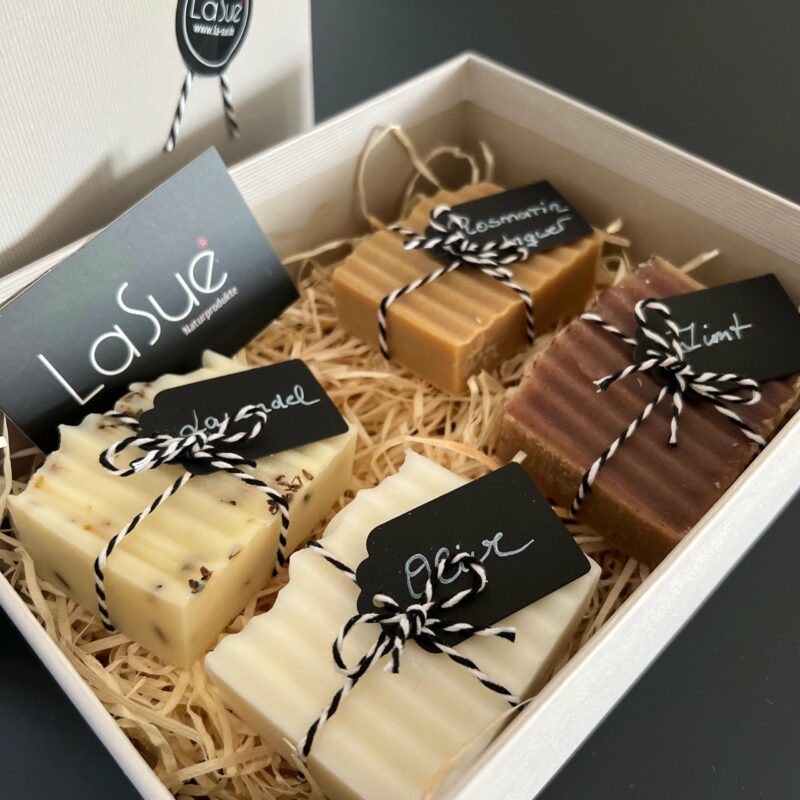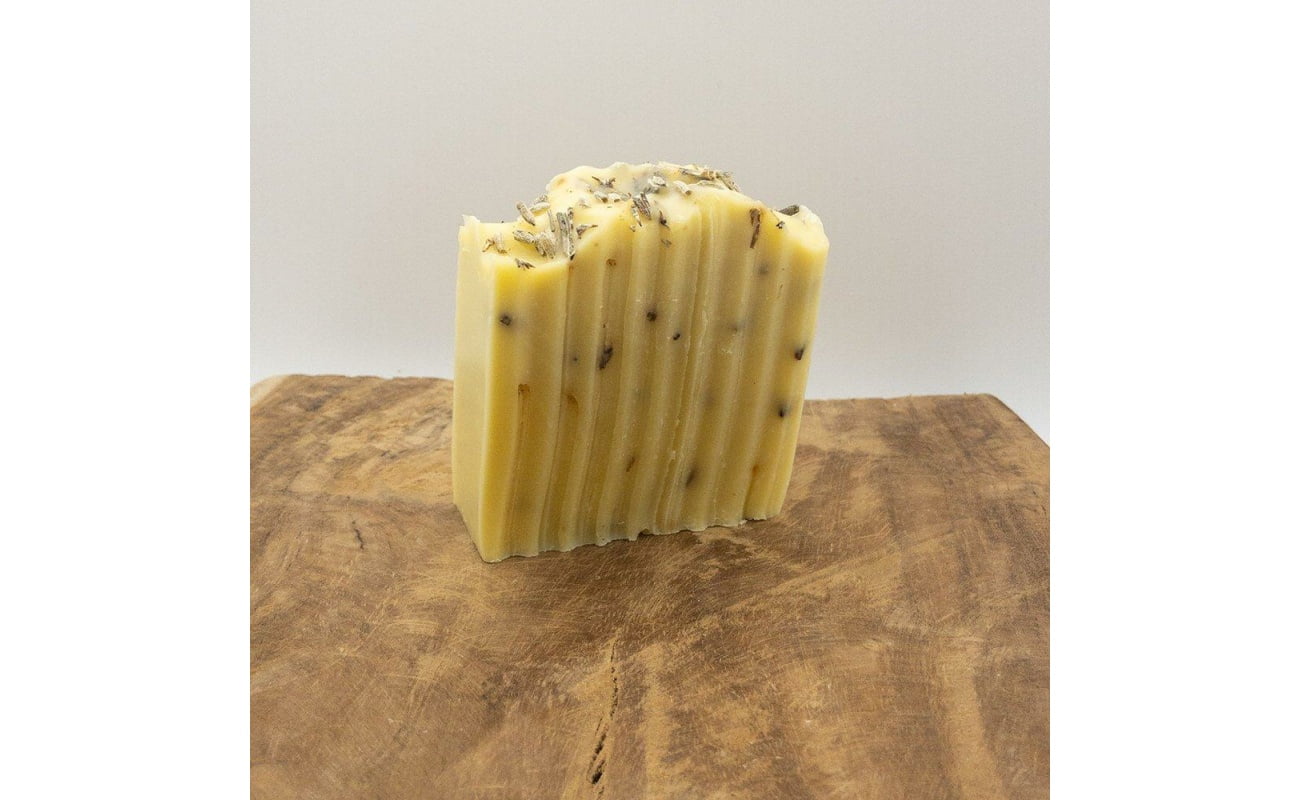Recipe and instructions for making lavender soap with essential oil. Includes tips on using lavender flowers, natural purple dyes, and light scrubs
Over the years I have developed and shared recipes for different types of lavender soap. Some of these contain a blend of essential oils, others have added scrubs, flowers, or natural soap coloring. The lavender soap recipe I feature in this post is plain and simple but can be adjusted if you want to add more flair. It uses common soap-making oils, lavender essential oil, and a trustworthy purple soap dye.
That's the beauty of making handmade soap. Once you master the basic principles and techniques, you can make soap as simple or complex as you like. Keep this in mind as you make this soap recipe. Stick to the basic ingredients or use the tips below to add more ingredients.
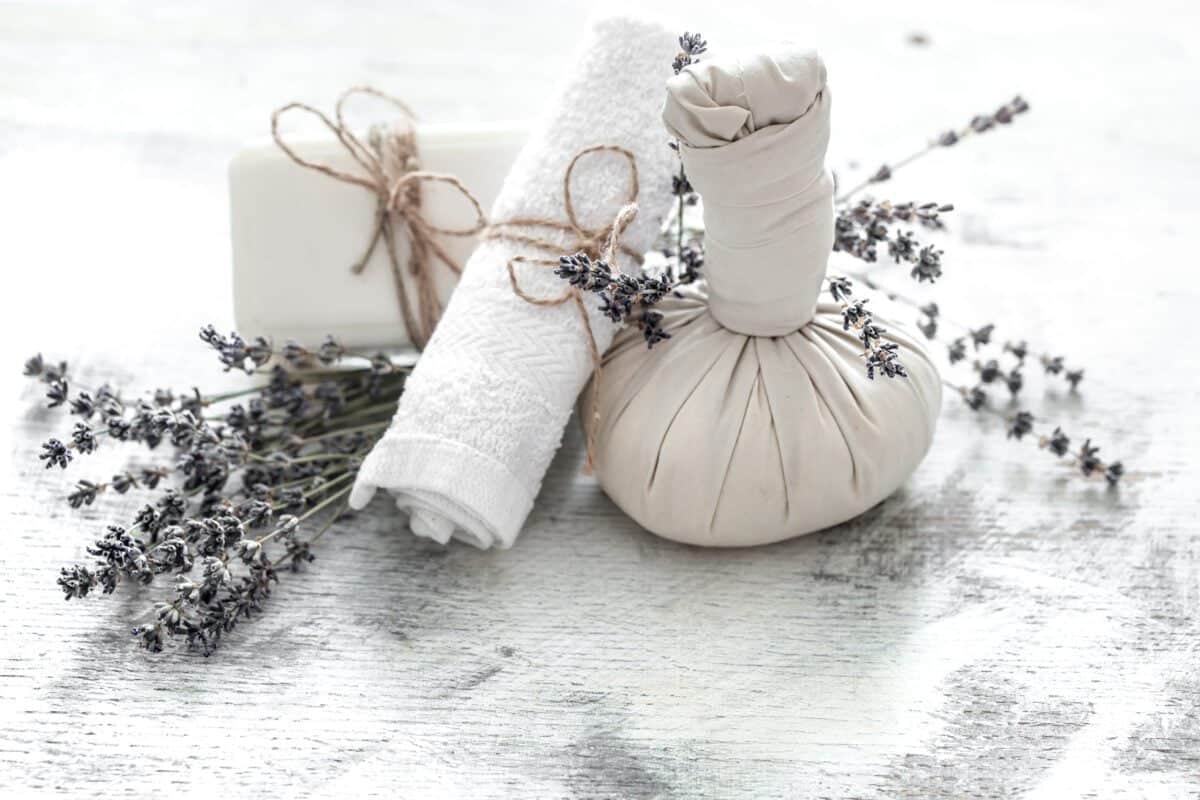
Enter your headline here
- Ingredients
- equipment and safety
- Basic recipes and formulation of own recipes
- The process of soap making: making, pouring and curing
If you are new to making handmade soap, you should check out my four part series on making natural soap. She gives a good introduction to what to expect from the ingredients, equipment, recipes and how to combine everything to make soap. It is especially important to be careful when handling lye. Part 2 tells you what to expect. Lye is nothing to be afraid of, but you should know how to use it safely.
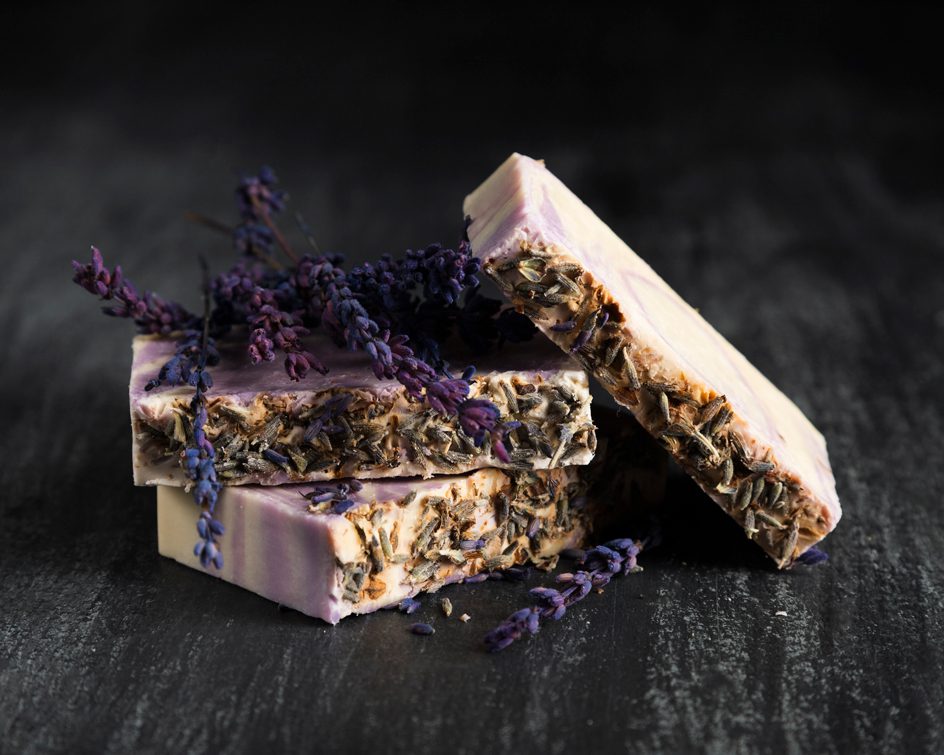
History of Lavender Soap
There is no clear indication of how or when soap was invented. As far as historians know, there were various methods of producing crude soap-like substances in both the Middle East and China. The earliest report is from a recipe written in 2800 BC. was written on a clay tablet from Babylon. It uses “water, alkali and cassia oil”. These first soaps were probably unscented, as we first heard of scented toilet soap in the 9th century.
The manufacture of perfumed soap was first described by Muhammad ibn Zakariya al-Razi of Persia in the 9th century. The famous alchemist and philosopher, considered the greatest physician in the Muslim world, left the first recipes for soap making in his legacy. Although I can't find any reference to it, I strongly suspect that lavender played a role in scenting those first bars of soap.
Soap making in the Middle East continues with soap factories in Syria around the same time. This Aleppo soap was imported to Europe and adapted there for the production of Castile soap - soap with olive oil. Although Aleppo soap is traditionally unscented, it is likely that scented soap was also introduced to Europe at the same time.
Types of Lavender Oil
Lavender soap is generally understood to mean a soap that smells of lavender. Real soap is always made with lavender essential oil, the distilled oil from lavender flowers. It smells intense and has more positive properties for body and mind than I can list here.
When sourcing your own lavender oil for recipes, you should know that there are two main types of essential oil. Lavender flower oil, also called Lavandula angustifolia (lavender) flower oil, is the more common and has a density of 0,885 g/ml. The second type is distilled from a similar plant called Lavandula latifolia and has a density of 0,905 g/mL. It is better known as lavender lace oil. The quantities are important when figuring out how much to use in your recipes.
There is another type of lavender oil that you can use in this recipe. Homemade lavender oil is simply a carrier oil that you mix with lavender flowers. For this recipe, you can start by adding lavender to the olive oil and sunflower oil.
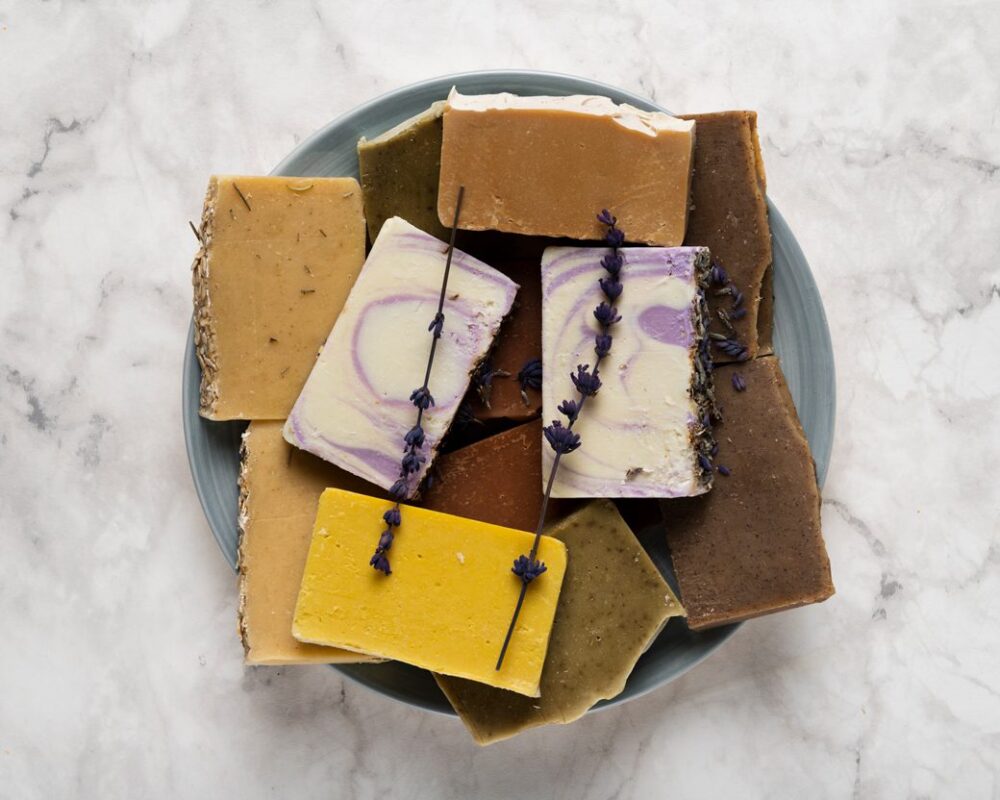
How much lavender essential oil to use
You should use no more than 3 percent lavender essential oil by weight in washable skin products such as soap. This guideline was set by the European Union and is intended to protect us from skin reactions. Lavender essential oil, like all essential oils, is not “pure lavender”. It is a complex blend of natural phytochemicals including linalool and linalyl acetate. Some people may have serious reactions to these ingredients, so you should not exceed 3%.
For a 454g (1lb) batch like the one I show below, you should use no more than 13,62g of lavender essential oil. Lavender flower oil has a density of 0,885 g/mL, which equates to 15,39 mL of essential oil for a one-pound batch, or about 3 teaspoons (3,12 tsp to be exact).
Lavender tip oil, on the other hand, has a different density of 0,905 g/ml. This means that for a 1 pound recipe you will need 15,05ml or 3,05 teaspoons. It doesn't make a huge difference for small batches, which is why I recommend using teaspoons or either type of lavender oil for this recipe.
However, if you are making a large batch, e.g. B. 7200 g (15,87 lb), the difference between the two grades becomes more apparent. You would then use 48 teaspoons of lavender flower oil or 49,5 teaspoons of lavender lace oil.
Dye soap naturally purple
First of all, the natural color of the soap depends on the main soap oils. Extra virgin olive oil makes a greenish colored soap (at least initially) which is why many soap makers use lighter colored olive pomace oil. This way you have more control over tinting the soap the color you want. Remember that the color of your key soap oils will affect the final color of your soap. This is true whether you use additional coloring or not.
With a traditional lavender soap recipe, you wouldn't color the soap at all. The natural color of Castile is unobtrusive and beautiful in its simplicity. If you want to match the lavender scent of your soap with a color, you can use different ingredients.
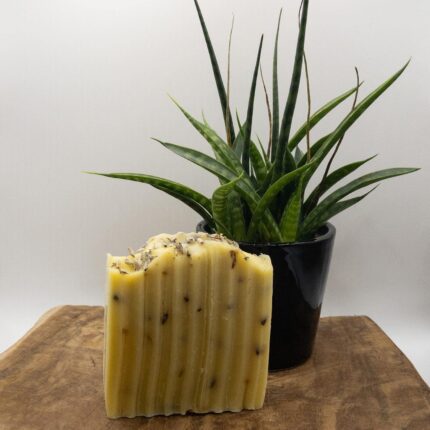
Alkanet and Gromwell root are excellent natural soap dyes. Both are plant roots that you can use to color some or all soap oils. You can also put the powder directly into the soap, but this can give your soap a grainy feel. Infusing whole cannabis plants in a carrier oil and using it in soap making can also produce a slightly purple color.
Ultramarine violet is a nature-identical mineral powder that is probably the easiest to use of the three. It is debatable whether it can be considered natural as it is made in a controlled environment. Most soap makers consider it to be nature-identical, and I personally have no issues using oxides and ultramarines in soap making.
Use of lavender flowers in soap
There is one major problem with using lavender flowers and buds in soap: they tend to turn brown. If you mix them into your soap before it has set and saponified, they will definitely turn brown. Scatter them on top and they'll likely turn brown. However, there are two tricks to prevent this.
First, lightly press the lavender stems into your soap about five minutes after watering. Make sure only the bottom edge touches the soap as shown in the photo above. Also, be careful not to insulate the soap bars or the heat will cause them to brown.
The other method of preventing lavender from turning brown on the soap is even more sophisticated. Allow your soap bars to fully saponify for 48 hours. Then spray the tops with alcohol, sprinkle lavender buds on top and spray again. The alcohol ensures that the lavender sticks. Over time, lavender will naturally turn brown, but this can take weeks or even months. If you follow these tips, it won't turn brown instantly or overnight.
Natural scrubs for lavender soap
Another way to customize lavender soap is to add natural scrubs. Oat flakes, poppy seeds and fine pumice stone are a good choice and also make the soap visually interesting. They are usually added in the “Trace” amount. The amounts you can use vary, but this is what I would recommend:
- Oatmeal: use up to 1 tablespoon (5,5 g) per pound of soap oils
- Poppy Seeds: up to 1/2 teaspoon (1,5 g) per pound of soap oils
- Fine Pumice: Use up to 1/2 teaspoon (3g) per pound of soap oils. I recommend tossing it with some oil before adding it to avoid clumping.
Natural lavender soap recipe
Makes a quantity of 454 g (1 lb) with 5% superfat. Depending on the shape used, it makes 5-6 bars. Various solid and liquid oils are used for this recipe, which are coordinated in such a way that a hard bar with lots of fluffy foam is created.
This recipe also includes the use of sustainable palm oil. I used it for two reasons: First, it's an excellent soap oil. And second, to support the RSPO.
Ultramarine violet is also used in this recipe to get the beautiful color. This is a “nature identical” mineral and is completely optional.
AUSRÜSTUNG
- digital scale
- Infrared thermometer / digital thermometer
- hand blender
- 6-cavity silicone mold
- Small sieve (portafilter)
- Heat-resistant jug for the lye solution
- goggles (eye protection)
- rubber gloves
- Silicone spatula
- Stainless steel pan for melting the fixed oils
MATERIALS
lye water
- 64 g sodium hydroxide 2,25 oz
- 115 g Distilled Water 4.05 oz
solid oils
- 112 g coconut oil (refined) 3.9 oz
- 82 g Sustainable Palm Oil (or Tallow) 2.9 oz
liquid oils
- 164 g olive oil 5,78 oz
- 78 g sunflower oil 2.75 oz
Ingredients to add after Trace
- 19 g shea butter 0,67 oz
- 3 teaspoons Lavender Essential Oil 13.6g / 0.48 oz
- ⅛ teaspoon ultramarine violet (optional)
INSTRUCTIONS
Preparation
- I always advise preparing and measuring everything before you start making soap. With your equipment ready, measure out all of the ingredients—that includes the water in the heatproof pitcher, the lye in a glass, and the fixed oils in the pot.
The liquid oils should be placed in a kitchen bowl or jug. Once measured, pour about XNUMX tablespoon into a small glass. In this small amount of oil mix the ultramarine violet when you want to use it. A mini milk frother is very helpful, but you can also use a small whisk or fork. The addition of oil is optional but gives a lovely lavender hue. Without the mineral, your bars will be creamy and natural in color.
You should also wear closed-toe shoes, a long-sleeved shirt, hair up, eye protection, and rubber/latex/vinyl gloves.
Mix the lye water
- Soap making involves chemistry, so this step needs extra care. Make sure to wear safety goggles and rubber gloves, and pour the lye crystals into the water in a well-ventilated area. It's best outdoors because of the steam and heat that builds up as you mix.
Stir immediately and thoroughly with a silicone spatula until you are sure all the lye crystals are completely dissolved. Allow the lye to cool outdoors, or set the pitcher in a bowl of water to cool. When I cool the lye water in a room, I fill the sink with an inch of water and put the pitcher in to cool.
melting of the fixed oils
- Right after you mix the lye water, place the pot with the oils on low heat. Stir while it melts to speed things up. When there are only a few small pieces left unmelted, take the pot off the stove and keep stirring.
When the oil is completely melted, pour the liquid oils into the pan - that is, the sunflower oil and the olive oil. Save the essential oil for later.
Also add the colored oil. Pour it through a sieve into the pan. Ultramarine violet tends to clump in my opinion, so the screen will catch any clumps. If they get into the soap, you'll have clumps of paint in your pieces.
Melting the shea butter
- Before you get to the next step, you need to melt the shea butter. It is added to “Trace” so that it remains in the soap as a rich butter and is not converted into soap. You can either melt them in the microwave in short bursts or use a double boiler.
measurement of temperature
- When preparing this recipe, you should ensure that the temperature of the oil and the lye water is around 49 °C. The temperature doesn't have to be exact, but it should be around that mark, and both the oil and the lye water shouldn't differ by more than ten degrees.
Mix
- When the temperatures are just right, pour the lye water through a strainer into the pot with the oils. This catches all undissolved lye residues.
Now mix up the chopsticks. This is when the mixture will start to thicken and have the consistency of pudding.
Essential Oils & Pouring
- When you get the right consistency, add the melted shea butter and essential oil. Stir quickly but thoroughly as the mass can set quickly. Now pour the batter into the molds and use the spatula to scoop up every last drop of soap.
Harden
- Leave the soap in the mold for 48 hours. After that, the saponification is mostly complete and you can take it out. Allow the soap to dry out for four weeks before using it.

